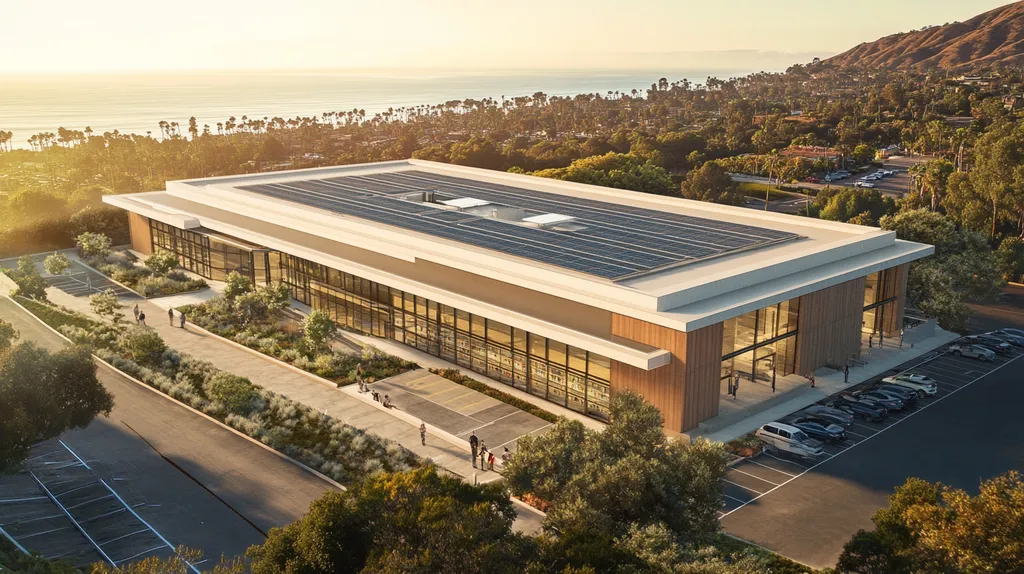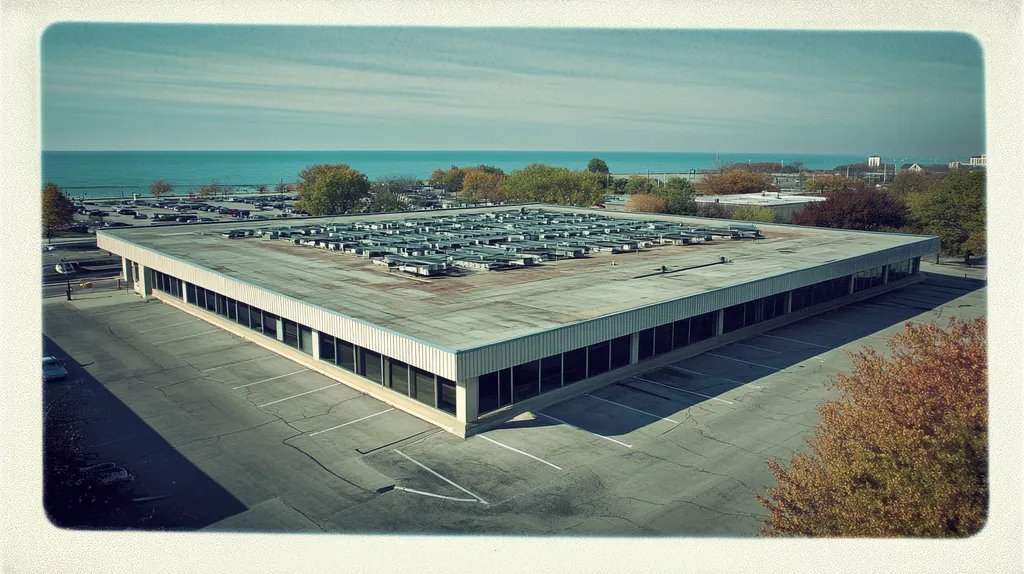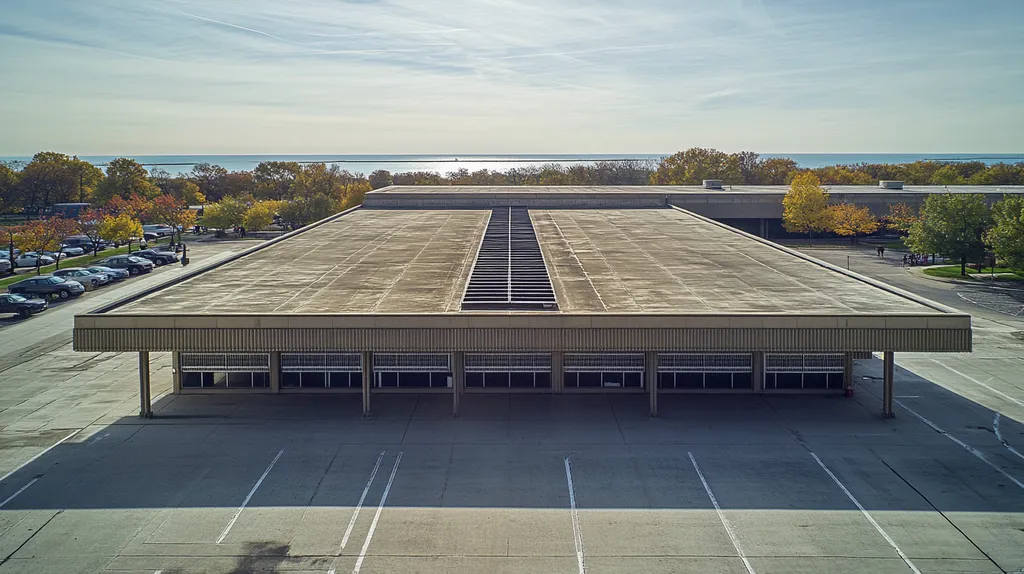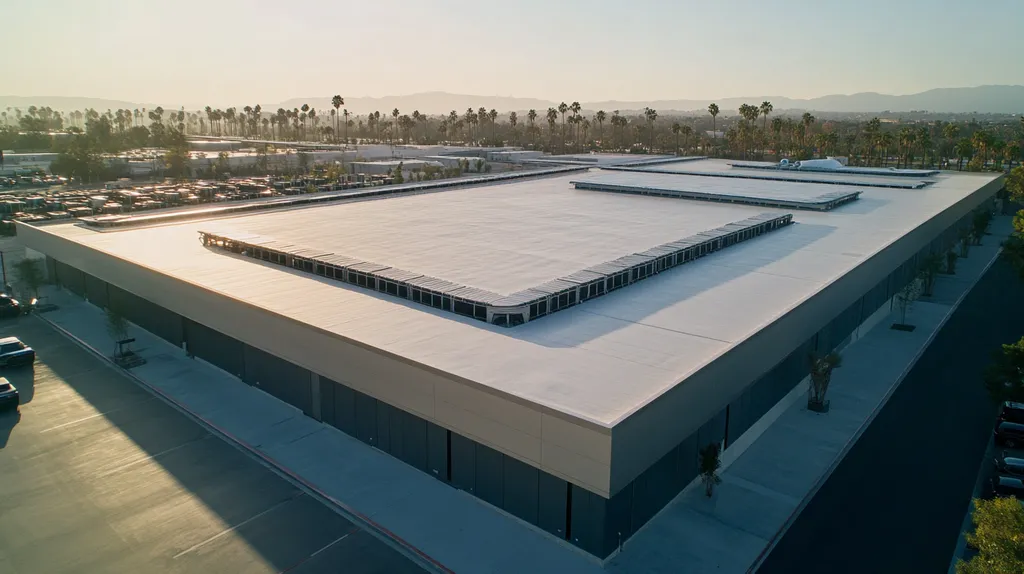When it comes to funding commercial roof projects, conventional wisdom might be steering property owners in the wrong direction. Recent industry data reveals that 65% of businesses face unnecessary delays and inflated costs by adhering to traditional financing methods.
From rigid bank loans to deceptively simple lease agreements, established funding approaches often create more problems than they solve. The real cost? Millions in preventable expenses and compromised building integrity.
This analysis challenges long-held assumptions about commercial roof financing, revealing systemic flaws in current practices while highlighting overlooked alternatives that could revolutionize how businesses fund their roofing investments.
SECTION 1: CURRENT PRACTICES
For many commercial property owners, the journey toward a new roof is fraught with financial decisions that can dramatically affect their bottom line. With the cost of a commercial roof often ranging from $50,000 to several million, understanding the financing landscape is not just important—it’s vital. Traditional methods like bank loans, leasing, and grants have their merits, but they often present obstacles that can delay projects and escalate costs. This section will illuminate these prevalent practices and highlight their limitations, laying the groundwork for a discussion about the pressing need for innovative solutions.
Bank Loans and Credit Scores
Bank loans are often the go-to choice for financing commercial roofing projects. However, securing these loans frequently depends on credit scores and overall financial stability. Many owners discover that strict credit requirements can constrain their borrowing abilities and push projects into a frustrating waiting game.
This can stall essential work, especially when financing must be finalized before any hammer meets nail. Variable interest rates introduce unpredictability, transforming what seemed like a manageable expense into a financial cliffhanger.
The approval timeline at traditional banks can be agonizingly slow, hampering urgent repairs. When a roof springs a leak or shows signs of distress, waiting for loan approval can significantly jeopardize the property’s integrity.
With these hurdles in mind, many property owners are beginning to seek alternative financing avenues that offer swifter solutions to pressing roofing needs.
Leasing Options and Their Limitations
Leasing has emerged as another viable financial route for commercial roofing projects, allowing owners to spread costs over several years. While this strategy preserves cash flow for immediate operational needs, it comes with notable restrictions.
Many leasing agreements lock property owners into long-term commitments, often without offering actual ownership of the roof itself. Consequently, even as owners enjoy reduced initial expenses, they ultimately invest in a roof that they won’t own.
Moreover, lease payments can, in some instances, surpass the cost of purchasing the roof outright, creating a long-term financial burden that can feel more like a lease on a car than on a vital property asset.
With these financial constraints, it’s crucial for businesses to scrutinize leasing agreements carefully. Failing to do this can exacerbate financial pressures, leaving little room for essential roof maintenance or upgrades.
Grant Eligibility and Application Process
Grants can be a lifeline for funding roofing projects, particularly for energy-efficient upgrades. Unfortunately, the application process can be overwhelming, often leading property owners to feel engulfed by administrative red tape that stymies necessary repairs.
Eligibility requirements can be restrictive, typically hinging on location, property type, and project details. As a result, many owners miss out on grant opportunities simply because they don’t meet these criteria.
The competitive nature of grant funding adds further complexity to the situation. With an abundance of applicants chasing limited resources, the odds of securing funding can feel like playing a high-stakes lottery, leaving owners scrambling for alternative financial solutions when roofing issues arise.
In summary, while grants represent a valuable opportunity for financing, their access is often laden with significant barriers. Property owners are encouraged to proactively seek resources and clarify eligibility requirements to more effectively navigate the grant landscape.
SECTION 2: SYSTEMIC ISSUES
The financing landscape for commercial roofing projects is riddled with obstacles that can significantly hinder timely upgrades. Lengthy approval processes for loans can delay critical replacements, exposing properties to potential water damage and liability risks. Understanding these systemic issues is essential for property owners navigating the often murky waters of roofing investments.
Rigorous Approval Processes for Loans
For many property owners, the road to securing a loan resembles a convoluted obstacle course. Stringent approval processes often require extensive documentation and can take weeks—or even months—to complete. This lag time can have dire consequences for facilities needing urgent repairs due to leaks or damaged structures.
The sheer volume of paperwork can create frustration, as property owners grapple with a barrage of intricate financial terms and conditions. Small business owners, in particular, may struggle to meet the creditworthiness criteria set by lenders, resulting in lost opportunities for timely upgrades. Picture a leaky roof waiting impatiently while approval forms languish in a bank’s inbox.
Further complicating matters, the specter of economic downturns can tighten lenders’ purse strings, making loan approvals even more elusive. In this environment, property owners are often left stranded, unable to invest in essential roofing improvements when they are needed most.
Clearly, the current lending framework is in desperate need of reevaluation to facilitate timely repairs and upgrades in the commercial roofing sector.
Hidden Costs in Leasing Agreements
Leasing agreements may appear alluring at first due to their seemingly low initial costs, but they often conceal hidden charges that can stack up over time. Property owners may unknowingly step into a financial minefield, where unexpected fees lurk within the fine print, ready to pounce.
For instance, maintenance fees may be excluded from the original leasing offer, leaving owners to shoulder those costs when they least expect it. Some agreements also bind property owners to long terms, reducing flexibility and inflating total expenditures. It’s almost as though property owners are asked to sign up for a long-term relationship without seeing all the emotional baggage first.
Moreover, the lack of ownership in leased roofs can lead to compromised maintenance standards. Lessees may not treat these vital assets with the same diligence as their owned counterparts, resulting in escalating costs and deteriorating building integrity over time.
Understanding the true financial impact of leasing agreements is critical for property owners aiming to optimize their roofing investments. A thorough examination of the contract can save unexpected heartache down the road.
Competitive but Time-Consuming Grant Applications
Grants hold promise for alleviating financial stress during commercial roofing projects, yet they come with their unique challenges. The application process is often an uphill battle characterized by intense competition and steep documentation requirements—resources that many facility managers simply can’t spare.
The need to craft detailed project proposals and meticulous budgets can deter even the most committed property owners from applying. After all, juggling day-to-day operations doesn’t always leave enough hours in the day to tackle such an intricate maze of paperwork.
Even after investing significant time in grant applications, there’s no guarantee of success. Owners may find themselves submitting multiple applications without securing a single funding opportunity, leading to frustration and wasted efforts. The uncertainty surrounding grant outcomes can further stall necessary roofing work, leaving properties exposed to the elements.
Given these challenges, property owners must carefully weigh the pros and cons of pursuing grants as a funding option. The commitment of time must be balanced against the urgency of immediate roofing needs—a precarious equation indeed.
SECTION 3: MISSED OPPORTUNITIES
In the quest for a new roof, many commercial property owners inadvertently overlook crucial financial opportunities that could lessen strain on their budgets. By ignoring energy efficiency credits, cooperative purchasing agreements, and vendor financing options, they risk incurring inflated costs and missing out on long-term savings. These missed opportunities can hinder operational effectiveness and lead to greater financial burdens. This section highlights how leveraging the right financial incentives can turn a daunting expense into a strategic investment.
Overlooking Energy Efficiency Credits
Energy efficiency credits can significantly lighten the financial load of upgrading roofing systems. Many government agencies and utility companies offer enticing tax credits or rebates to businesses that invest in energy-efficient solutions. Yet, a substantial number of property owners remain blissfully unaware of these available credits, losing out on easy cash.
Upgrading to a roof that meets energy efficiency standards can lead to notable reductions in energy consumption. This not only slashes energy bills but also opens the door to various incentive programs. Keeping abreast of evolving regulations and available credits can turn a hefty initial investment into a manageable expense.
Additionally, these credits support sustainability initiatives, enhancing a company’s reputation in a fiercely competitive market. A solid understanding of available rebates can convert what might seem like just another roofing project into a wise investment.
By neglecting to explore energy efficiency credits, property owners unwittingly leave money on the table. Thorough research and working alongside knowledgeable contractors can help uncover these financial gems.
Neglecting Cooperative Purchasing Agreements
Cooperative purchasing agreements offer a golden opportunity to maximize spending on commercial roofing projects. These agreements enable multiple entities to join forces and procure goods and services at well-negotiated rates, yet many property owners overlook this efficient route.
By participating in cooperative purchasing groups, businesses can take advantage of collective buying power. This results in significantly reduced costs for roofing materials and installation services. Accessing pre-negotiated contracts means less time spent on tedious procurement processes, enabling a smoother project execution.
By opting out of cooperative purchasing, property owners may find themselves grappling with inflated costs that delay projects. Engaging with local or regional cooperative programs can unlock substantial savings, making a roofing project much more feasible.
To enhance cost efficiency, property owners should seek to join established cooperative purchasing networks. The financial benefits gleaned from these agreements can transform overall project budgets.
Ignoring Vendor Financing Options
Vendor financing presents a flexible and often overlooked solution for many commercial property owners. This approach allows businesses to finance their roofing projects directly through suppliers, potentially alleviating cash flow concerns. Still, many property owners cling to traditional financing methods, missing out on this advantageous option.
Vendor financing can frequently offer more favorable terms than conventional bank loans, making it a compelling choice. By building partnerships with roofing suppliers that provide financing alternatives, property owners can manage costs more effectively. This streamlined method reduces the need for substantial upfront capital.
Moreover, vendor financing can strengthen relationships between contractors and suppliers, fostering better service and responsiveness. By exploring this option, property owners can balance their budget while still prioritizing quality.
Overlooking vendor financing not only restricts financial flexibility but may also jeopardize project timelines. Investigating available financing options helps align project ambitions with financial realities, leading to a more seamless roofing experience.
SECTION 4: ROOT CAUSES
The challenges of financing a commercial roof project can feel like navigating a financial minefield, and a recent survey revealed that over 60% of property owners have delayed roof replacements due to these very obstacles. Understanding the root causes behind these financing struggles is essential for making informed decisions. This section will explore three critical issues: creditworthiness, long-term financial implications, and a lack of financial flexibility. Each plays a crucial role in how property managers approach their roofing investments.
Creditworthiness and Its Impact
Creditworthiness acts as the entry barrier to financing options for commercial roofs. Lenders typically evaluate a property owner’s credit score before approving any loans or lines of credit. A low credit score can mean higher interest rates or outright denial, which delays crucial roofing work.
As a result, property owners might miss out on timely repairs or upgrades, opening the door to more significant damage and escalating costs. This creates a catch-22 where financial constraints prevent necessary maintenance, leading to worse roof conditions—quite the recipe for disaster.
For instance, a facility manager eager to replace a leaky roof may find financing options scarce due to poor credit history. This unfortunate situation can force essential projects to linger on the back burner, directly affecting a building’s function and safety.
Tackling creditworthiness issues early on can empower property owners to identify alternative financing routes and secure more favorable terms. It’s vital for facility managers to grasp how their credit profiles can dramatically shape their funding opportunities.
Long-Term Financial Implications
When it comes to financing roofs, the long-term consequences can be anything but trivial. While cheap short-term loans may seem appealing, they can deliver costly surprises that jeopardize a facility’s financial health over time. High-interest rates and unfavorable repayment terms can quickly add pressure as unexpected expenses arise.
For example, opting for quick financing could lead to balloon payments that penalize cash flow. Given that roof maintenance is an ongoing expense, it’s essential for property owners to evaluate the sustainability of their financial commitments seriously.
Moreover, neglecting the long-term implications of financing can result in severe underfunding for future roof repairs. This might lead to scenarios where owners face unmanageable costs due to damage that could have been avoided.
A comprehensive funding strategy must balance immediate investment with considerations for long-term financial stability. Regular evaluations can help ensure property owners make informed choices that safeguard their roofing investments for years to come.
Lack of Financial Flexibility
Financial inflexibility is another considerable hurdle for property owners when it comes to roofing projects. Many conventional funding methods involve rigid repayment schedules that can’t adapt to unforeseen expenses or shifting cash flow. Such inflexibility might compromise roof maintenance plans, putting property integrity at risk.
For instance, an economic downturn could force a facility manager to make tough calls between addressing roof repairs or covering other operational costs. Ignoring roof maintenance today could lead to much larger—and costlier—problems down the line.
Some property owners may find themselves stuck in unfavorable contracts that restrict their ability to respond to evolving needs. Without adaptable financing options, facility managers are often left in a precarious position.
Investing in financial models that allow for flexibility can empower owners to maintain their roofs effectively. By selecting solutions that adapt with their financial scenarios, property managers can optimize resource allocation and safeguard the structural integrity of their properties.
DATA DRIVEN EVIDENCE
The stakes are high when selecting the right financing method for a commercial roofing project. Nearly 40% of property owners recently reported facing financial strain due to unexpected roofing costs. This statistic serves as a wake-up call, emphasizing the importance of understanding the various financing options available before committing. Each choice can significantly influence cash flow and long-term budget management, making this a decision that shouldn’t be taken lightly.
Interest Rate and Repayment Term Analysis
Interest rates are crucial in determining the overall expense of roofing projects. Traditional loans can carry interest rates ranging from 6% to 10%, creating a hefty financial burden. On the flip side, alternative financing options like Equipment Financing can offer rates as low as 4%, which is a significant difference that shouldn’t be overlooked.
Repayment terms also play a pivotal role in monthly cash flow. Conventional financing typically imposes rigid 5- to 15-year terms, restricting property owners’ financial flexibility. Studies show that more favorable loan terms can free up essential funds that businesses can allocate to operational needs, ultimately leading to improved financial health.
A careful analysis of interest rates and repayment structures reveals how a strategically negotiated financing option can save property owners thousands over their roof’s lifespan. Recognizing these subtleties is essential for making well-informed financing decisions.
Moreover, portfolio analyses indicate that properties funded through alternative means generally experience improved ROI during the repayment period, thus reinforcing the necessity of selecting the right financial partner for roofing projects.
Case Studies on Financing Outcomes
Diving into case studies provides illuminating insights into the financial impacts of various roofing projects. For instance, one analysis spotlighted a manufacturing facility that selected a capital lease over a conventional loan. The outcome was impressive: a 25% reduction in upfront installation costs.
This facility benefitted from the same high-quality roof while maintaining better liquidity for their operational costs. Conversely, a similarly situated company relying on traditional financing faced cash flow issues, hindering other vital areas of their business.
These real-world examples demonstrate that savvy financial choices not only impact immediate cash flow but also contribute to long-term business success. This reinforces the importance of choosing financing methods tailored to the specific needs of each project.
Ultimately, these case studies make a compelling case for exploring options beyond conventional financing, highlighting the value of informed decision-making in realizing favorable outcomes for roofing projects.
Statistical Comparison of Financing Methods
A detailed statistical comparison of financing methods unveils noteworthy distinctions in outcomes. Recent data indicates that property owners opting for non-traditional financing reported total project costs up to 30% lower than those utilizing conventional loans.
Furthermore, analyses suggest that alternative financing methods often yield quicker project completion times, minimizing disruptions for businesses. Properties financed through these avenues also tend to achieve higher satisfaction rates among owners, an outcome not to be overlooked.
This data underscores the necessity of evaluating all available financing options. While traditional methods have long been a staple, they may not align with modern financial needs. Property owners could find that alternative financing better supports their roofing project goals.
Data-driven decisions empower owners to select financing options that not only cut costs but also enhance their property’s overall value. Such insights are vital for making knowledgeable financial commitments in commercial roofing endeavors.
SECTION 6: ALTERNATIVE SOLUTIONS
For commercial property owners facing daunting roof repairs or replacements, sticking to traditional funding methods may feel like running in place. In fact, recent data shows that 30% of businesses encounter project delays due to financing roadblocks. Fortunately, exploring alternative funding solutions can clear the path for timely roofing projects, preserving valuable assets. This section spotlights three noteworthy alternatives—PACE financing, flexible lines of credit, and the art of negotiating terms with lenders.
PACE Financing for Energy Efficiency
Property Assessed Clean Energy (PACE) financing emerges as a compelling option for roofing projects focused on energy efficiency. This innovative program allows property owners to obtain funding for renewable energy and energy-saving upgrades through property tax assessments. The benefits? Low-interest rates and extended repayment terms make it a tempting choice.
What stands out about PACE financing is how it aligns building improvements with property value increases—and translates into long-term savings. Owners can tap into their property’s equity while sidestepping hefty upfront costs. It’s no wonder many states are jumping on the PACE bandwagon, reflecting a growing understanding of this financing method.
Take California, for example, where commercial property owners have successfully utilized PACE to revamp roofing systems. The result? Reduced energy consumption and lowered utility bills—all while enhancing property marketability. As infrastructure evolves, PACE financing presents a prime opportunity to champion sustainable practices while easing financial burdens.
Flexible Lines of Credit for Ongoing Needs
Flexible lines of credit provide a pragmatic alternative for businesses juggling multiple roofing projects or ongoing maintenance tasks. This financial tool offers immediate access to funds, liberating owners from the encumbrance of long-term commitments. Draw on the line of credit as needed, allowing for effective cash flow management that adapts to fluctuating expenses.
By utilizing a line of credit, companies can address building needs without draining resources for unexpected repairs. Think of it as a financial safety net, particularly useful during peak seasons or economic uncertainties. Imagine a business hit by sudden storm damage—quick access to funds can mean the difference between a timely fix and escalating roofing woes.
Moreover, a flexible line of credit can also fund energy-efficient enhancements, serving as a short-term solution while analyzing long-term investment returns. This approach allows property owners to keep their roofs in tip-top shape, remaining proactive and responsive to every need.
Negotiating Favorable Terms with Lenders
Negotiating favorable terms with lenders can drastically influence the total cost of financing a roofing project. Property owners should prioritize building relationships with financial institutions over merely seeking funds. A solid partnership can yield better terms, lower interest rates, and enhanced repayment options.
To prepare for negotiations, owners should present comprehensive project plans and financial forecasts that demonstrate credibility. A well-documented proposal instills confidence in lenders, making them more amenable to specific requests. Seeking multiple quotes can also provide leverage during negotiations.
Consider a successful negotiation that results in extended repayment periods or lower interest rates tied to projected energy savings from a new roofing system. Such adjustments create a win-win outcome for both property owners and lenders alike. Ultimately, investing time to negotiate can optimize the funding process for commercial roofing projects, transforming financing into a collaborative effort.
Looking Ahead
The commercial roofing industry stands at a critical crossroads, with 65% of property owners facing unnecessary financial strain due to outdated funding approaches.
Traditional financing methods continue to delay vital roof repairs and replacements, putting billions in property value at risk while increasing long-term costs.
The data clearly shows that alternative financing options like PACE programs and flexible credit lines offer superior outcomes, with case studies demonstrating up to 30% lower total project costs.
As sustainable building practices become standard and energy efficiency takes center stage, property owners who embrace innovative funding solutions will gain a significant competitive advantage.
The future of commercial roof financing lies not in established practices, but in creative solutions that prioritize flexibility, sustainability, and long-term value creation.
FREQUENTLY ASKED QUESTIONS
Q. What challenges do commercial roofs face with current financing practices?
A. Many commercial property owners experience significant delays due to slow loan approvals and strict credit requirements. These hurdles can stall essential roofing projects, affecting property integrity and escalating repair costs over time. Traditional financing options often present obstacles that leave owners in a frustrating waiting game.
Q. How do systemic issues impact financing for an industrial roof?
A. Systemic issues like lengthy loan approval processes and hidden leasing costs can hinder timely roof replacements. Property owners may struggle to address urgent repairs due to the convoluted nature of traditional financing, leaving facilities vulnerable to significant damage and liability risks.
Q. What financial opportunities are often missed in commercial roofing projects?
A. Many property owners overlook energy efficiency credits, cooperative purchasing agreements, and vendor financing options. Ignoring these can inflate project costs and prevent substantial long-term savings, placing an unnecessary burden on budgets and operational effectiveness.
Q. How does creditworthiness affect options for financing a commercial roof?
A. Creditworthiness significantly impacts access to financing, where low scores might lead to higher interest rates or outright loan denials. This limitation prevents property owners from securing timely roofing repairs, often creating a cycle of neglect and escalating damage that could have been avoided.
Q. What evidence supports exploring alternative funding for an industrial roof?
A. Statistics show that properties funded through alternative methods report costs up to 30% lower than traditional loans. Additionally, these methods often lead to quicker project completion times, minimizing operational disruptions and achieving greater owner satisfaction.
Q. What innovative financing options are available for commercial roofing?
A. Alternative solutions like PACE financing and flexible lines of credit offer viable options for managing roofing project costs. Furthermore, negotiating favorable terms with lenders can also provide property owners with better repayments, reducing financial strain and improving project outcomes.
Q. How can property owners effectively manage financing for a commercial roof?
A. Owners should thoroughly evaluate all financing options, including alternative methods, and assess their overall financial health. Building relationships with lenders, understanding financing terms, and being proactive can greatly enhance their ability to secure favorable funding and effectively manage roofing projects.











